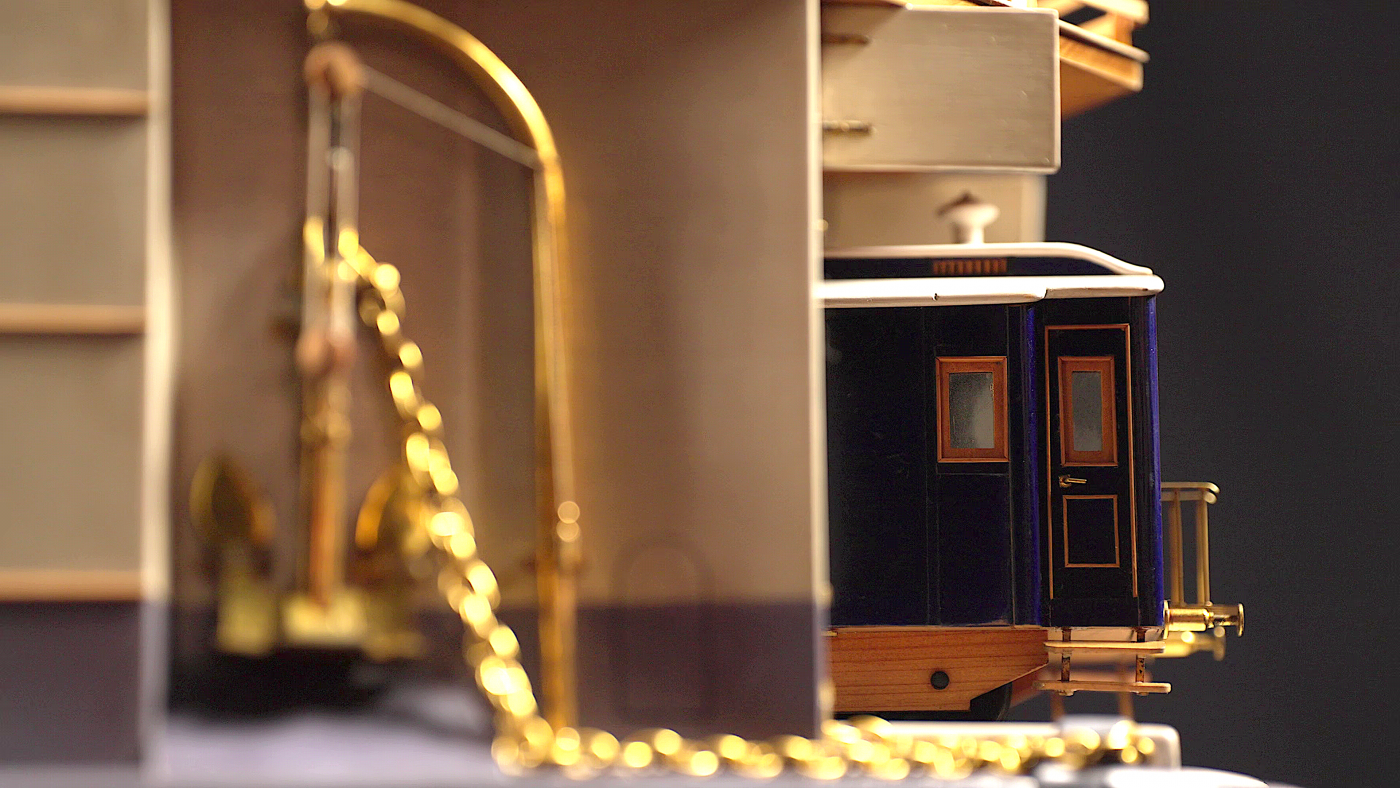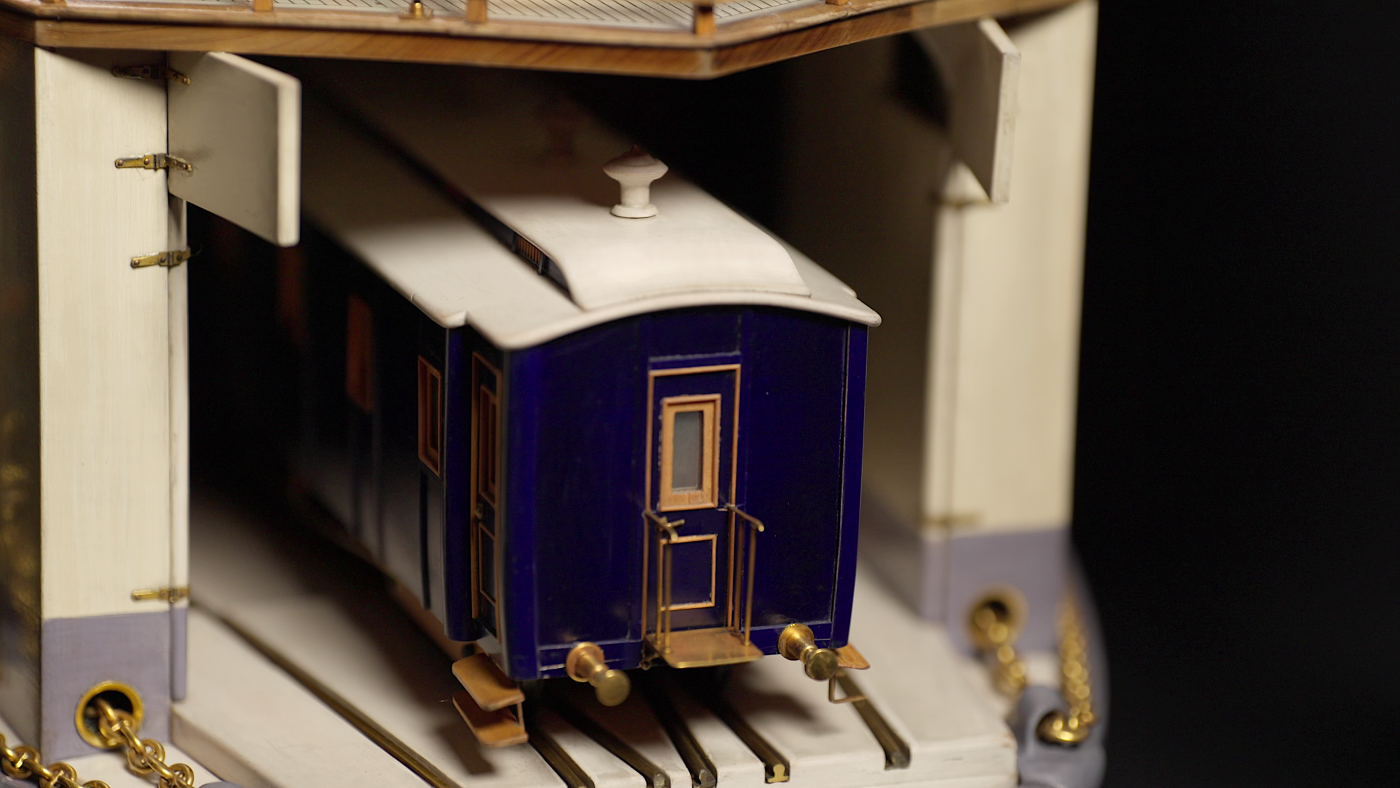Maritime Innovation In Miniature
Baikal
This is a model of Baikal, built in 1896 in Newcastle upon Tyne. She was one of the most innovative ships of the nineteenth century and is testament to the genius of Tyneside’s Victorian engineers and shipbuilders. She is both an icebreaker and a rail ferry, and was built by Armstrong Whitworth on the River Tyne, but her ultimate destination was more than 4000 miles away, in Siberia.
This was a period of rapid railway expansion and nothing posed a greater challenge than the trans-Siberian railway which ran from Moscow, across 6000 miles of tundra, all the way to the port of Vladivostok on the pacific ocean. But there was one significant obstacle: Lake Baikal, the world’s largest freshwater lake, landlocked in the centre of the Eurasian continent. It is slightly larger than Belgium.
The Russians needed a way to transport trains across Lake Baikal, and they needed to be able to do it in Siberian conditions. They therefore needed it to break ice. Baikal was designed by Stepan Makarov, a Russian Admiral and maritime innovator. But as with many other maritime visionaries in the period he had no choice but to turn to British engineers for the skills and resources to realise his dream.

He designed Baikal like a battleship; not to survive attacks by enemy shells, but to survive the pressure of Siberian ice. 290 feet long and seventy feet wide, she was designed with steel an inch thick, like a belt of armour. She had a double-bottom, just like warships of the period.
She had 15 boilers and four funnels and numerous vents to bring fresh air to the hellish furnaces below. Her bow was designed to press down and crush pack ice. She had propellers at both bow and stern to aid manoeuvrability in ice – a key design feature of all modern icebreakers. On board she had three railway tracks and could carry 24 carriages and one locomotive on the middle deck.
Accommodation for 200 passengers and crew was above the rail deck. Space for 850 tons of goods was on the lowest deck. Inside, the ship had a richly decorated Tsar’s saloon, equipped with gold-plated dinnerware sets for passengers of the highest status.

Once built and successfully tested in sea trials in the English Channel, she was dismantled into 6,900 separate parts, each carefully numbered and colour coded, one side white, the other black. Her engine and boilers, also built on the Tyne, were also colour coded and disassembled.
The parts were then shipped to Russia and then transported 4000 miles overland where a shipyard had been built on the shores of Lake Baikal to reassemble this technological marvel. There, she was rebuilt by hand with none of the labour-saving devices such as steam-winches that were available in Newcastle.
After 18 months of endless work in the most appalling conditions, she was launched in the summer of 1899. She sailed regularly on the 400-milecrossing, a crucial link in the chain that now connected the North Sea with the Pacific, via railway. Baikal is a ship with a significant position in the history not only of ice breakers and train ferries, but also of globalisation and the making of the modern world.

